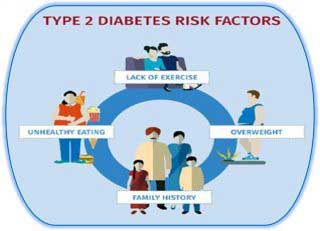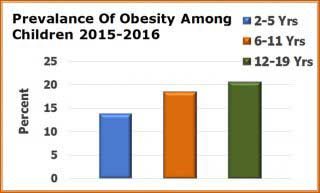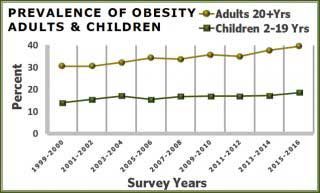Telehealth Reverse Diabetes With Advance Family Warning | Free Trial In Texas

Diabetes is a Family Concern. Diabetes in the family tells everyone to be Alert. To take care for themselves, their children and their grandchildren.
To learn more about programs Herd Healthcare offers, our website is:
www.herdhealthcare.com
Type 1 And Type 2 Diabetes Are Different
Type 1 diabetes is uncommon. It signals that the immune system is not working properly. Mother or father with type 1 diabetes means their children will have about 10 times the normal risk. That is, they have about 10% chance of type 1 diabetes. Both mother and father with type 1 diabetes doubles risk to 20 times normal with 20% chance.
Type 2 diabetes is much more common. Mother or father with type 2 diabetes means their children have twice the normal risk. About 50% chance if they’re overweight, 80% chance if they’re obese. Both mother and father with type 2 diabetes makes risk almost certain unless body weight and abdominal obesity are kept normal.
Advance Warning System For Type 2 Diabetes
Knowing there’s a family history is a real advantage. It’s advance warning.
 Type 2 diabetes is not inherited. What’s inherited is a low threshold for insulin resistance. Energy management is simply overwhelmed by overeating. Skeletal muscle and liver are using and storing all they can handle. Their cells reject further inward transport of excess sugar and fat.
Type 2 diabetes is not inherited. What’s inherited is a low threshold for insulin resistance. Energy management is simply overwhelmed by overeating. Skeletal muscle and liver are using and storing all they can handle. Their cells reject further inward transport of excess sugar and fat.
What is overeating? It’s consuming food containing more energy than required for resting metabolic rate and active physical work. An excess even more than can be stored in muscle, liver or fat tissue.
Family History of type 2 diabetes proves a potentially low threshold for insulin resistance to overeating. Usually insulin resistance increases along with overweight and obesity.
Some people who eat more than they need don’t trigger insulin resistance. They just become overweight and obese. They eventually have heart disease, stroke, cancer or dementia but they don’t get diabetes.
Avoid overweight and abdominal obesity to avoid abnormal threshold for insulin resistance.
Not enough skeletal muscle to store energy is just as bad as too much body fat. Loss of skeletal muscle can cause insulin resistance when there’s been a long time with little physical activity.
Setting The Threshold For Insulin Resistance
Most of that low threshold is set by the parents overeating before their children  are born. After birth, the response to overeating continues to form during childhood, adolescence and adult maturity.
are born. After birth, the response to overeating continues to form during childhood, adolescence and adult maturity.
As shown in the Figure, by the time children are 5 years old, 10 to 15% of them have become obese. At 11 years of age, 15 to 20% have developed obesity. By 19 years old, about 20% have become obese.
Among those obese children, any who have a family history of type 2 diabetes have an 80% likelihood of developing diabetes. Any children not overweight would have only about a 5% chance of developing type 2 diabetes.
The future for your family’s history can be changed. If you have children already, help them avoid diabetes before they have children. If they already have children, help them teach your grandchildren to avoid diabetes before they have children.
If you have a Family History of type 2 diabetes you have twice the likelihood of developing Type 2 diabetes. If you don’t have a Family History but you have diabetes then you are the one who starts the history for children and grandchildren.
If you have a Family History of type 2 diabetes, avoid overweight and abdominal obesity and maintain a routine of regular exercise. You’ll escape having diabetes yourself.
What if you don’t have a Family History of type 2 diabetes but you have diabetes yourself? Then you have the opportunity to change your family’s history. Corrections you make to reverse your diabetes will save good health for your children and grandchildren.
Avoiding Type 2 Diabetes
Obesity is becoming more and more common in adults and in children. As shown in the Figure, during the past 20 years, the prevalence of obesity in adults has increased from 30% to 40%. During the same time, the prevalence of obesity in children has increased from 14% to almost 20%.
 The increase in obesity in both adults and children has resulted in an increase in type 2 diabetes. About 10% of obese adults have type 2 diabetes and about 10% of obese children also have type 2 diabetes.
The increase in obesity in both adults and children has resulted in an increase in type 2 diabetes. About 10% of obese adults have type 2 diabetes and about 10% of obese children also have type 2 diabetes.
In the past, most all cases diagnosed in children were type 1 diabetes. Now, approximately half are diagnosed with type 2 diabetes. The relative increase appears to be related to the increased prevalence of obesity in children.
If you have a Family History of type 2 diabetes, how do you and your family avoid diabetes? By controlling fat stored inside the abdomen and maintaining physical activity!
You can control these physical features. Your maximal waist circumference should be no more than half your standing height. About 40 inches for a man and 35 inches for a woman. Your physical activity should include 150 minutes of moderate exercise every week with at least 2 sessions of resistance strength training.
If your task is to reverse type 2 diabetes, your maximum waist circumference should be less than 35 inches for a man or a woman. Physical activity every week should include 3 sessions of strength training for 30 minutes.
Family History Starts With The Children
 Paying attention and making measurements in your children is most important! Their threshold for insulin resistance will determine their health. It’s their health that determines the future Family History of type 2 diabetes.
Paying attention and making measurements in your children is most important! Their threshold for insulin resistance will determine their health. It’s their health that determines the future Family History of type 2 diabetes.
As children run, jump and play, they build and strengthen their skeletal muscles. Exercising muscles while playing uses energy from food they’ve eaten. Turning energy into muscle and using muscle for physical work prevents storing excess energy in body fat.
How much is too much body fat and what is too little physical fitness?
Size, shape and development keep changing as children get older. Fortunately critical features of physical growth and physical fitness can be combined in one metric.
Maximum waist circumference for boys and girls at all ages should be less than half their body height.
Family Acting All Together
The personal bonds within a family bring extraordinary opportunities to create a good future Family History.
The power of bonding strengthens trust and spreads enjoyment of personal achievement. Communication across distance and contact in family events together are great opportunities. Sharing makes it possible for all to take pride in success and pleasure from reversing diabetes. Family provides support and motivation for persistence when progress seems difficult.
 Family Day for Diabetes must be every day. World Health is important. It starts at home with each of us. We share experience, support each other and enjoy good health together as Family.
Family Day for Diabetes must be every day. World Health is important. It starts at home with each of us. We share experience, support each other and enjoy good health together as Family.
Summary
Type 2 diabetes results from low tolerance for excess energy from food not used for resting metabolism and active physical work. Initially, the excess is stored in fat and that causes overweight and obesity.
If excess energy to be stored becomes more than skeletal muscle, liver and fat can handle, sugar and fat are not cleared normally from circulating blood. In response, the pancreas secretes more and more insulin as levels of sugar and fat continue to rise. The failure of insulin to transport excess sugar and fat into skeletal muscle, liver, fat and other organs is called “insulin resistance.”
Some people who eat more than they need don’t trigger insulin resistance. They just become overweight and obese. They eventually have heart disease, stroke, cancer or dementia but they don’t get diabetes.
In others, the excess eventually becomes more than can be stored and causes type 2 diabetes.
 Family History of Type 2 diabetes is a strong advance warning for children and young adults in that family. Low threshold for insulin resistance is partly inherited at birth and partly learned by overeating as children grow and mature in their family.
Family History of Type 2 diabetes is a strong advance warning for children and young adults in that family. Low threshold for insulin resistance is partly inherited at birth and partly learned by overeating as children grow and mature in their family.
Avoid overweight and abdominal obesity and maintain a routine of regular exercise to avoid or reverse any abnormal threshold for insulin resistance.
Let us help you avoid or reverse any predisposition for type 2 diabetes in your family.
 We are pleased to share our blog articles with you, and we are always interested to hear from our readers. Our website address is:
We are pleased to share our blog articles with you, and we are always interested to hear from our readers. Our website address is:




